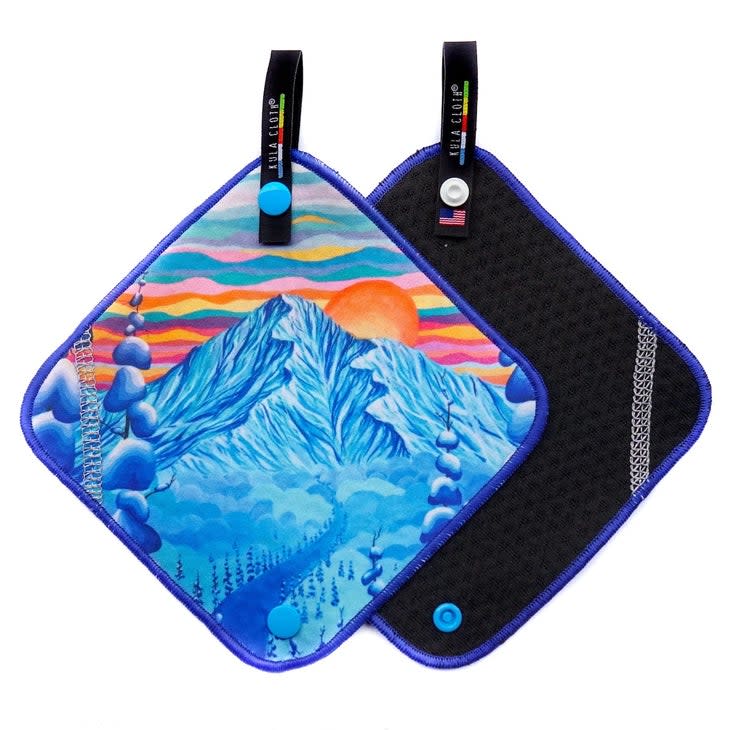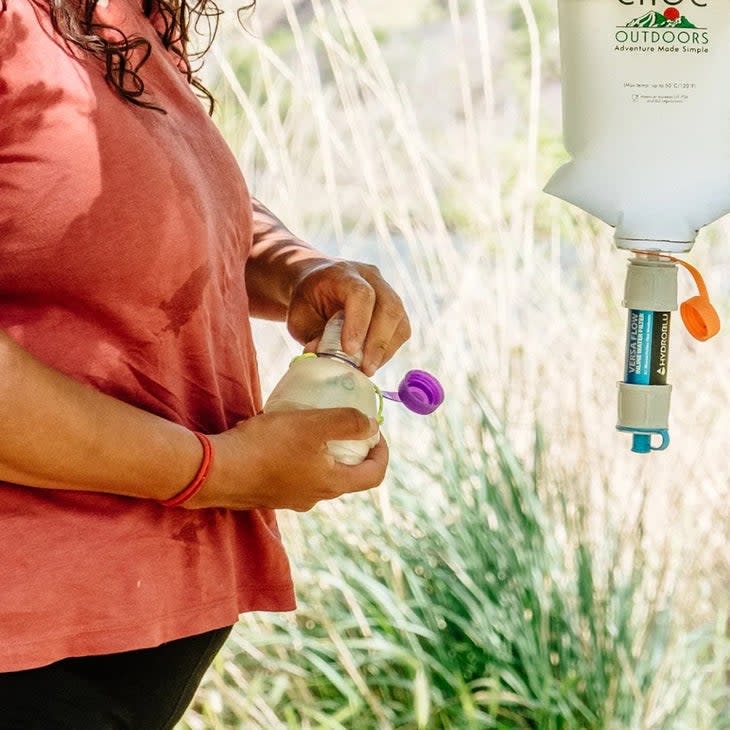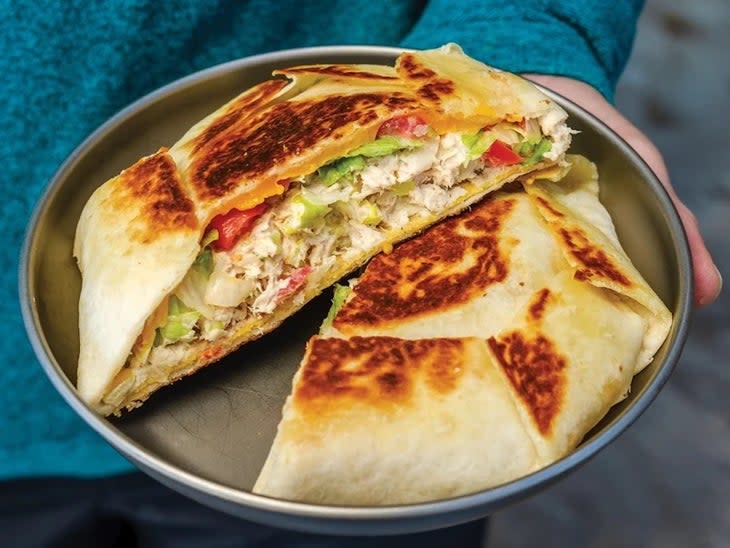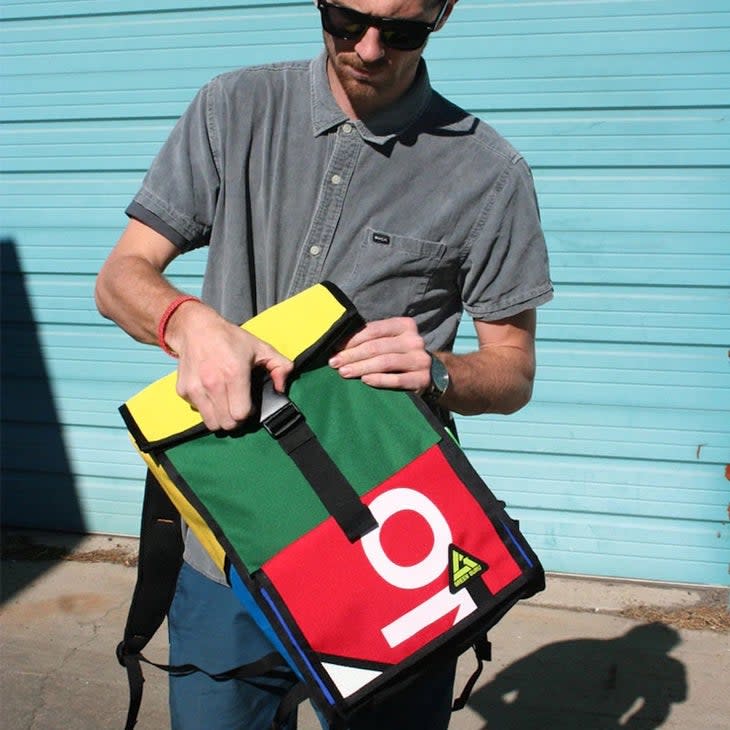5 Easy Swaps You Can Make to Be More Eco-Friendly On The Trail
Backpacker
A couple years ago, I read about a woman named Lauren Singer, who only produced enough trash in four years to fill a 16-ounce mason jar. Inside that jar, there's one credit card, one broken hair tie, wristbands from music festivals and concerts, and a couple other things she couldn't avoid. Simply put, she is my hero. Since reading about her, I've tried to live a more sustainable life, but the skeletons in my closet take the form of empty bottles of cherry limeade Sparkling Ice.
When backpacking, the trash I create becomes a lot more tangible because I have to carry it around with me. I could probably create enough trash on a weekend trip to fill the same jar that Lauren fills in four years. By the time I return to the trailhead after an overnight, my pile of shiny Pop Tart wrappers can create a mirror to look back at myself and question my impact on the planet.
The first step to living sustainably is using what you currently have and reducing your consumption overall, says Meg Carney, podcast host and author of Outdoor Minimalist, a waste-reduction guide for outdoor enthusiasts. Only make the following swaps once you've run out of your current stash, need new gear to adequately accommodate your upcoming adventure, or when your gear has sustained damage that is beyond repair. Before you start filling up your virtual shopping cart online, try finding these products at your local outdoor retailer--shopping locally is an easy way to make a big difference for the planet.

What you have: Single-use zip-top bags
Swap: Reusable bags and food wraps
When I try to convince my hiking partners to be more sustainable on the trail, they flinch back with typical excuses: It's too hard, too expensive. Well, not as much as going to the store to resupply another package of single-use plastic bags once you've burned through them (and a hole through the ozone layer). These bags are more durable than single-use plastic bags, and help you reduce the amount of litter that can end up on the trails. Our favorite brands are Stasher, Khala & Co, and Bumkins.

What you have: Toilet paper
Swap: Kula Cloth and bidet
I love my Kula Cloth, and I love that it's becoming an emblem of a stylish inner club to have one hanging off your bag on the trail. It's an antimicrobial cloth that disinfects itself in the sunlight. Don't have to wipe when you pee? You can still be eco-friendly when you do your business without resorting to leaves or rocks. Backcountry bidets are a cheap, compact, and convenient way to leave no trace and stay clean. Besides, who wants to pack out toilet paper streaked with you know what?

What you have: Plastic Smartwater bottles
Swap: CNOC Outdoors hydration bottles and reservoirs
On the trail, Smartwater bottles are as ubiquitous as stinky feet. They're durable and fit easily in a pack's side pocket. Great for you, but not the planet. Luckily, CNOC makes silicone bottles with similar dimensions to Smartwater's that can collapse when empty. The best news: You can purchase 2-3L water reservoirs and 1L bottles that attach to filters with a 28mm thread, such as the Sawyer Squeeze.
Got a busted reservoir? You don't have to rush to replace it--there are ways to troubleshoot problems ranging from a micropuncture to a full-blown tear.

What you have: Packaged snacks and dehydrated meals
Swap: Something you made yourself
Did you know you can dehydrate your leftovers? Make a double batch at home and store the extra serving to rehydrate on the trail. You'll save money (those packaged meals might be tasty, but they add up quickly), eat what you actually like, and avoid those multilayer bags that can't be recycled. Here's one of our go-to recipes.
If you still prefer convenience over cooking, Fernweh Food Co. is changing the dehydrated meal game by using 100% compostable or omnidegradable packaging. All of their meals are plant-based or vegan to lessen the impact on the planet. Need more convincing? This Portland-based company's southwest stew earned the top spot on our dehydrated burrito bowl ranking.

What you have: An upcoming adventure that your current gear can't accommodate
Swap: Secondhand or repurposed gear
Not all gear is made to last a long time, but you can stretch its lifespan if you keep it clean. Fix any tears or snags with adhesive patches. It's the best practice for the environment to try and avoid buying new gear if your current kit does the trick. But, if you're branching into activities or adventures that require more advanced or new gear, look for secondhand or repurposed gear.
Ask fellow hikers in your circle if they have gear to spare, browse local consignment stores or online marketplaces, and if you're an REI Co-op member, check out the garage sales online or in many retail locations. If you want something new but still eco-friendly, some quality companies for low-waste, upcycled gear are Metamorphic Gear, Green Guru Gear, and CragDog Custom Canine Equipment.
New gear feels great, but so does giving back. When you buy a new piece of gear, put your old stuff to good use. Our Gear Up Give Back program, lets you pay your pre-loved gear forward for a good cause. Just box it up and print out a free shipping label. Our partner, Gear Fix, will make small repairs and resell it, and 100% of the proceeds go to our nonprofit partner, The Outdoorist Oath.
For exclusive access to all of our fitness, gear, adventure, and travel stories, plus discounts on trips, events, and gear, sign up for Outside+ today.]]>

